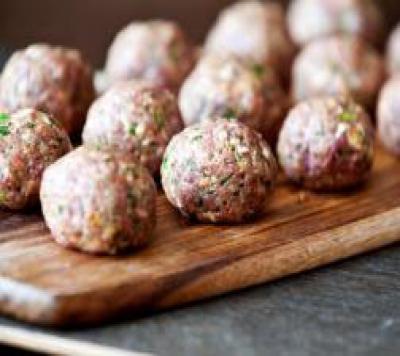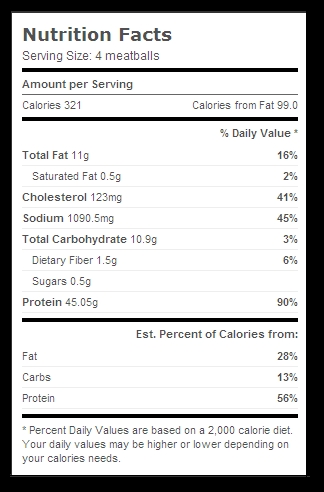
If there is such a thing as a self-proclaimed “super food”, then oatmeal would take the title. It’s known to lower cholesterol, which makes it good for the heart. It’s a “hearty” meal that sticks around for hours, which leaves you satisfied and guess what..It’s not fried..So, it must be good for you, right??? Well the answer would be yes (to a certain extent) and a BIG FAT NO!
OK lets start with the good. (quick pointers)
- Over 40 studies have shown that eating oatmeal may help lower cholesterol and reduce the risk of heart disease.
- Oatmeal can help you control your weight.
- Oatmeal contains a wide array of vitamins, minerals and antioxidants and is a good source of protein, complex carbohydrates and iron.
- Oatmeal is quick and convenient.
So, those are really good points. To be honest, I can’t really deny the good things that Oatmeal brings to the table. It’s a tremendous food choice but there are some negatives and you need to know them especially if Oatmeal is part of your daily diet. LETS GET US SOME KNOWLEDGE!
1.The Carb to Fiber Ratio is WAAAY Off. Oatmeal is very high in carbs and not all that high in fiber. Looking at the Quaker Oats Nutrition Facts you’ll see that every serving has about 27 grams of Carbs to only 4 grams of Fiber. Not terrible mind you but not great either. I always shoot for a Fiber to Carb ratio of 30% or higher. Unfortunately, Oatmeal is at a measly 14%. What does this mean? Well, more carbs mean more sugar in your blood stream and also means more stored energy. Also, if you consume too many carbs in one sitting, your body will store the excess as fat (if you don’t burn it off). This is especially bad for those people with high blood pressure and really bad for those looking to lose a lot of weight.
2. Most People Don’t Eat Plain Oatmeal. Raise your hand if you wake up in the morning and boil a fresh bowl of plain boring oats with no additives (sugar, syrup, fruit etc). (que jeopardy music)… waiting…still waiting…No one? Exactly…Lets be honest, most people instead go for the sugar loaded, sodium filled, chemically filled replacement Oatmeal better known as Quaker Oatmeal, Cinnamon and Spice flavor. Really? 33 Carbs to 3 grams of fiber and 13 grams of sugar??? Really? REALLY?? Thats not at all healthy. Also, the FDA recommends the average person needs to get about 300-400 calories per meal. One packet of Oatmeal only has about 160 calories. So you’ll have to double your serving just to get enough food to last you. Not a good idea. All you’ve done is consumed 66 grams of carbs (roughly all you need for the day if you’re on a weight loss diet) 6 grams of Fiber, 8 grams of protein (not bad but not good) and 26 grams of sugar. Please tell me what’s healthy about that?
BUT LYELL ITS GREAT FOR THE HEART!!!!!!!!!!!!!!!!
3. Is Oatmeal Good For Your Heart?
I guess in a way it is. I mean it’s low in fat.
I don’t think so. Try this: Have a serving of slow-cooked (e.g., steel-cut, Irish, etc.) oatmeal. Most people will consume oatmeal with skim or 1% milk and some dried or fresh fruit. Wait an hour, then check your blood sugar.
If you are not diabetic and have a fasting blood sugar in the “normal” range (<100 mg/dl), you will typically have a 1-hour blood glucose of 150-180 mg/dl–very high. If you have mildly increased fasting blood sugars between 100 and 126 mg/dl, postprandial (after-eating) blood sugars will easily exceed 180 mg/dl. If you have diabetes, hold onto your hat because, even if you take medications, blood sugar one hour after oatmeal will usually be between 200 and 300 mg/dl.
This is because oatmeal is converted rapidly to sugar, and a lot of it. Even if you were to repeat the experiment with no dried or fresh fruit, you will still witness high blood sugars in these ranges. Do like some people and pile on the raisins, dried cranberries, or brown sugar, and you will see blood sugars go even higher.
The blood glucose effects of oatmeal really don’t differ much from a large Snickers bar or bowl of jelly beans. [1]via Heart Blog
I know that second paragraph is hard to understand at first so go back and read it again. RIGHT NOW. For you lazy peeps I’ll summarize. If you have high blood pressure or you’re diabetic, eating Oatmeal can increase your blood sugar to extremely high and possibly dangerous levels. Why? Well, as I stated above, Oatmeal is high in carbs…carbs turn into sugar which can lead to high blood sugar levels. As Ron Burgandy so eloquently stated,”It’s science”..
So, what you’re saying is that I should avoid Oatmeal like the plague, right? OF COURSE NOT! Oatmeal is great and when used correctly it is a wonderful part of any diet. Now, there are obviously some good aspects of Oatmeal and some that should be very alarming. So know your medical history and eat smart. To be honest, my diet right now consists of Oatmeal at least 2-3 days a week. So obviously I think eating Oatmeal is OK. The key is moderation and not falling into the trap that the flavored versions are good for you. THEY ARE NOT! DON’T DO IT!!!!
If you are going to eat oatmeal, do so with caution. Add only fresh or dried fruits and especially don’t add brown sugar, butter and syrup to “add flavor”. I would suggest even adding a scoop of Fiber supplement as well. Also, don’t make it your only item for breakfast. Maybe eat one serving and throw in an egg or two.
Be smart, do your homework and don’t fall for fancy advertisements that are designed for you to buy their crap!




